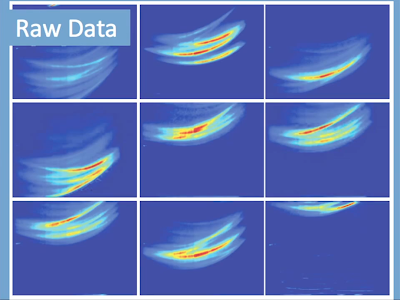That little blotch of light has a lot more than meets the eye. No this isn't some flash trickery, or Photoshop instead this is light in motion. Enter the world of Femtophotography. Life at a trillion frames per second. Your usual movie or TV show is a measly 24 frames per second where as a slow motion scene is around 60. And those fancy slow motion cameras that the Mythbusters use? Around 1000 and maxing out at 10,000 frames per second. This camera however is is so fast it can actually capture light moving, the benefits are also pretty amazing. But just to show you how slow this camera really is, picture this. The amount of time it takes for the light to reach the end of the bottle lasts only a nanosecond, but watching it in real time will last a whole year! So slowing it down by a factor of 10 billion gives you this amazing 10 second clip.
How it works
So how does this work? As they kill fire with fire, instead capture light with light. Essentially meaning a laser constantly flashes on and off a trillion times per second gives you a "bullet" of light as seen in the image above. Of course by taking a image this fast the amount of light that gets through is extremely small. So instead they send billions of "bullets" and weave together the data to get that clip.
Applications
Now there not be that many applications for this technology in the first place due to the enormous size of the camera, but as it progressively gets smaller and smaller the possibilities are seemingly endless. First off we can use this technology to image our bodies without the use of x-rays. Since when these "bullets" of light are fired some of it goes in your body. And continues to bounce of inside. Using that data the camera can effectively map your body. Or a variation of that technique is using it to tell if a fruit is ripe. It could also be used to look around corners. By sending "bullets" of light at an angle, the photons will bounce of the angle and reach the object, then the photons bounce back. Then by timing when each individual photon bounces back they are able to weave together an image.





No comments:
Post a Comment